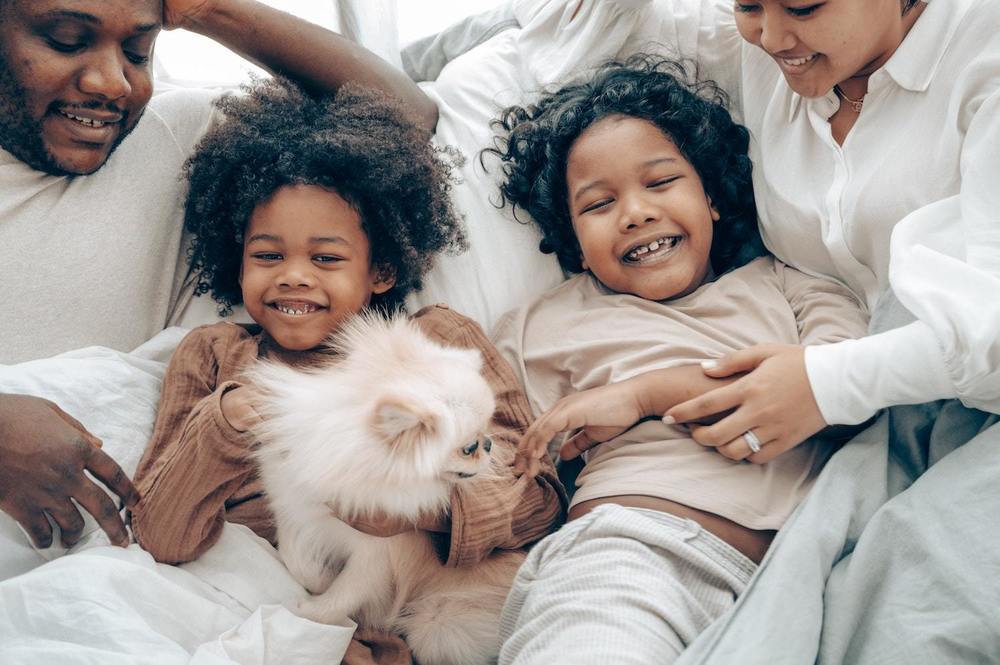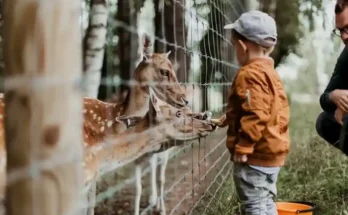Are your children nagging you to have a pet at home? Here’s how to choose based on different criteria.
The criteria to take into account
The choice between all these little balls of fur, scales or feathers is not the easiest. However, by focusing on certain criteria, you can easily choose the perfect animal for your children.
Let us guide you!
Why do you want to give a pet to your children?
It is important to start this adventure by asking the right questions. All children on earth want to have a little ball of fur at home, but why do you want to take the plunge and give it to them?
It is obvious that if the goal is simply to please them because they have a whim, neither you, nor the animal, nor your children will be happy.
This questioning that you must also carry out with your children is important because it will also allow you to choose the right animal:
- If you have an only child and want to bring them an adventure companion, a goldfish won’t really be ideal.
- If you want to introduce a child to responsibilities, a dog may be a little too complicated as a first pet.
Sit down with your kids and ask them why they want a pet? In this way, you will already be able to drastically reduce your choice.
Did you know? Animals have many benefits for children!
Physiological benefits, boost for well-being, psychomotor development, accountability and socialization factor… animals have many benefits for the growth of your children. So, you have many reasons to say yes to them!
What is the animal’s life expectancy?
Another important criterion when choosing a pet for your children concerns life expectancy. The animal will grow up with your children who will form emotional bonds with them.
Unfortunately, some pets do not have a long lifespan and you will need to explain the concept of death to your children. A difficult step if your child is really young.
Choose accordingly, taking into account that as you grow up your children may also have different desires. Here is the average life expectancy of our favorite pets:
- dog: between 10 and 15 years old
- cat: about 15 years old
- rabbit: between 5 and 8 years old
- hamster: between 2 and 4 years old
- mouse: about 2 years
- parrot: more than 50 years!
- goldfish: up to 10 years
- tortoise: more than 70 years old
- hen: about 10 years
- horse: between 20 and 30 years old
What is the animal’s life cycle?
How many parents have made the mistake of buying a hamster only to realize later that it’s a nocturnal animal that doesn’t really like petting…children quickly lose interest and parents lose patience?
Explain to your children the lifestyle of certain animals that they wish to have so that there are no surprises:
- Chinchilla: life at night, not sociable
- hamster: life at night, not sociable
- gerbil: day life, very sociable
- The rabbit: life during the day, moderately sociable
- the mouse: life at dusk, very sociable
- tortoise: not very sociable, hibernates
The perfect animals for children
Normally you should have worked out the small details and have a good idea of what your children want and need.
But if you ever lack inspiration, find out how to choose your children’s pet according to their age group, or the type of character of the animal, for example.
Which pet to choose by age group
Let’s start by specifying that in general, it is not really recommended to entrust a pet to a child under 5 years old. Before this age, they cannot take care of a pet.
Nevertheless, under the supervision and responsibility of the parents, they can already come into contact with the animals and perform certain tasks to familiarize themselves with the responsibility of having an animal (filling the water bowl, playing together, etc.). Dogs and Cats are perfect for this.
Once older, here is how to choose by age group:
- Under 5 years old: Goldfish, other animals only under parental supervision
- From 5 to 10 years old: cat, guinea pig, rabbit, ferret, fish, small parakeet, canaries, and certain easy-care dogs
- From 10 to 14 years old: hamster, chinchilla,
- 14 years and over: snakes, spiders, lizard and other NAC, horse, parrot
Mammals: the affectionate animals par excellence
Dogs have this ability to sense the mood of their masters. Also called “man’s best friend”, your dog can bring comfort and assurance to your child.
From the age of 3, children are able to create a good connection with their dogs. In this sense, for the little ones it is recommended to put them in contact with dogs of a certain age and having been well trained.
Indeed, puppies with a fiery nature could spend their time disturbing them and nibbling them. Also, before taking a dog, you must take into account the fact that he needs to go out a certain number of times a day and also that he needs a large outdoor space to flourish. Big dogs are definitely not made for apartment living.
The cat is also one of the most common pets. He is very clean and shows great autonomy (provided that you regularly clean his litter box and fill his bowl).
The cat is also a very cuddly animal that likes to have fun with children and to be petted. On the other hand, he does not like being pulled in line or being chased. If you want to take a cat for your child, prefer a kitten that will learn to grow with him. This will allow your child to learn to respect their cat’s need for independence at appropriate times.
The rabbit is also a very sociable animal that loves to be petted and soothes children. It is a very clean animal that always does its business in its cage and in the same place. Moreover, being very fragile, it is important to watch it when you take it out of the cage. He could in fact risk hurting himself by bumping into furniture or trying to chew on electrical wires.
Goldfish: an easy-care animal
Placed in its aquarium, the goldfish is exciting for the eyes of a child. In addition, it takes up little space and does not make noise, which is especially important for parents. Goldfish is also ideal for hyperactive or asthmatic children.
In addition, it requires very little maintenance: you will only have to feed it and change its water regularly. On the other hand, avoid water turtles, certainly adorable, but their aquarium can stink quickly!




